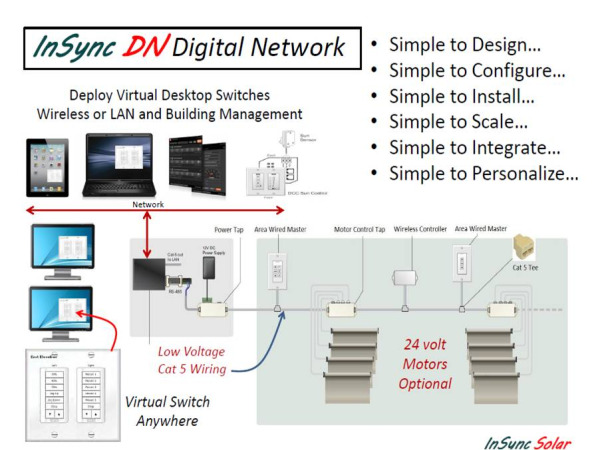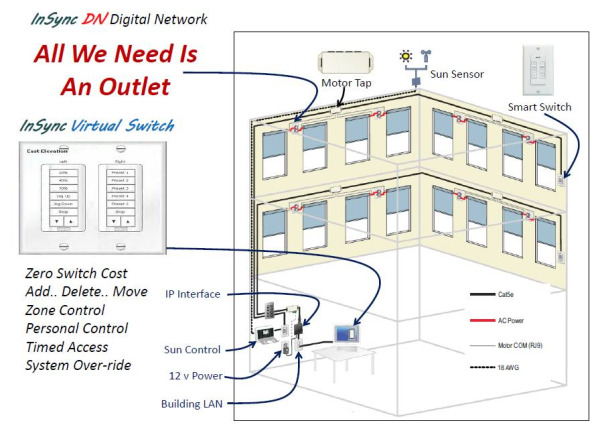During the past 3 years I have presented well over 50 Lunch & Learn sessions. It has been very rewarding to educate hundreds of Architects and Designers about the many details and options in the world of Draperies and Window Coverings. What I have learned is that the specifications regarding Draperies and Window Coverings are often very light in terms of the necessary details. These incomplete specs eventually leaves the contractor confused and the architect scrambling to fill in the missing gaps.

After working with many Architects and Designers, my mission has evolved into education. I spend many hours assisting in the writing of specifications for the Architect to provide the Contractor with what’s required in order to receive accurate and complete estimates from the Subcontractors. When it comes to Draperies there are many details to consider. Is the project residential or commercial? There are certain types of treatments that are inappropriate for commercial or contract applications. My Lunch & Learn session “Communicating Successful Drapery Design” discusses these critical differences.
Often, even a basic window treatment specification lacks what is required for the contractor to receive the complete cost. For example, motorized shades are often specified without the wiring details that the electrician needs to know. Recessed ceiling pockets are forgotten and missing critical components. Motor control and integration are left completely “up in the air”. My session, “An Architect’s Guide to SolarSmart Shading” covers great solutions to offering the Owner/ Architect /Contractor complete specs that make it easy for the shades to be quoted.
The main goal is to think about window coverings as being more than just decoration. They have evolved into an important building sub-system and are as important as properly designed heating, cooling, and lighting. None one wants to deal with the cost over-run, stress, and lost reputation that results when solar control is poorly designed and executed.
Our new product InSync Digital Network (IDN) offers the Architect a complete, easy to specify Solar Shade Motorization System for medium to large projects. The IDN provides a new way to think about shading motorization.
SIMPLE TO DESIGN: The IDN is a bus line based network of intelligent addressable motors and smart controls which are software configured for the management of day lighting and glare to improve the comfort of building occupants and reduce HVAC energy demands.
SIMPLE TO CONFIGURE: Each component on the IDN is assigned a unique address on the RS-485 bus. This scheme allows specific tasks, up – stop – down – intermediate positions – locking – scheduling, etc. for every InSync smart switch and InSync intelligent motor to be configured over the network at the software level. Configuration and re-configuration is easy as these functional assignments are made without the need to access the end product or physically re-wire IDN hardware.
SIMPLE TO INSTALL: Category 5 cable, commonly known as Cat 5 or “Cable and Telephone”, is a twisted pair cable type designed for high signal integrity. This type of cable is often used in structured wiring for computer networks such as Ethernet. By using this world-wide wiring structure standard for the IDN DWF Contract has insured that bus line installation is cost effective and integrator friendly.
SIMPLE TO SCALE: IDN insures the scalability of the control system. Residential or commercial systems, whether designed for 10 motors or 1000 motors, no longer carry the first cost impact of providing a centralize building controller and remotely located hardware modules.
SIMPLE TO PARTNER: IDN plays nicely with others. With the standardization of the bus line approach on a RS-485 physical layer the IDN easily integrates with lighting, HVAC, and third party home automation systems.
SIMPLE TO PERSONALIZE: With the incorporation of the IDN web based Internet Protocol Interface, virtual switches can be remotely deployed on the existing buildings Local Area Network (LAN). This Graphical User Interface allows for each individual users PC on the LAN to have permission based control of their shading system. This personal control access is managed in the IP Interface. Virtual switches can be designed so that the user is only able to override the system when the energy performance of the shading system will not be compromised.


If you would like to learn more about the InSync Digital Network, please contact Neil Gordon at . Also, if you would like to set up a Lunch & Learn at your office, let Neil know.

